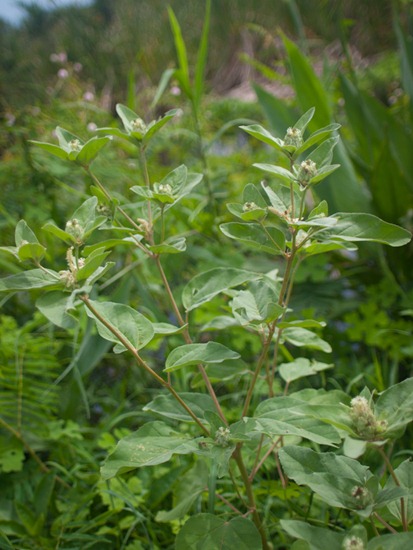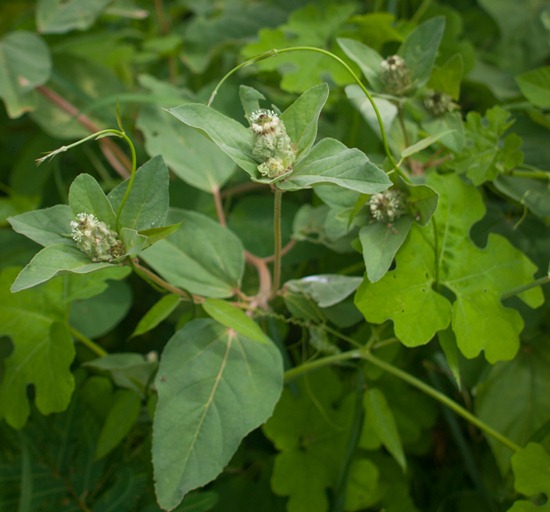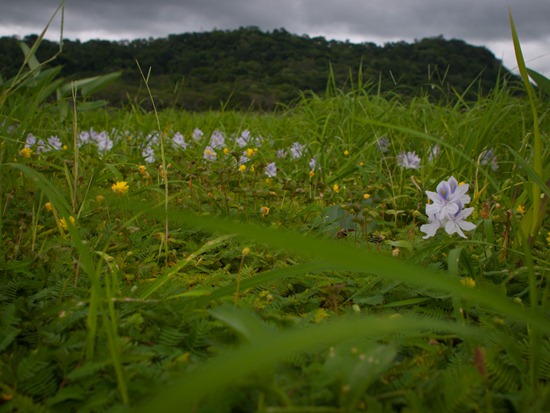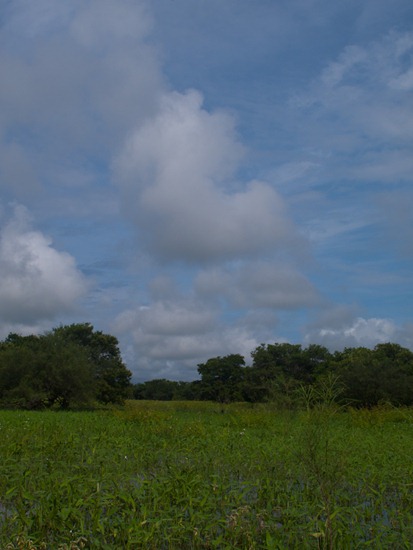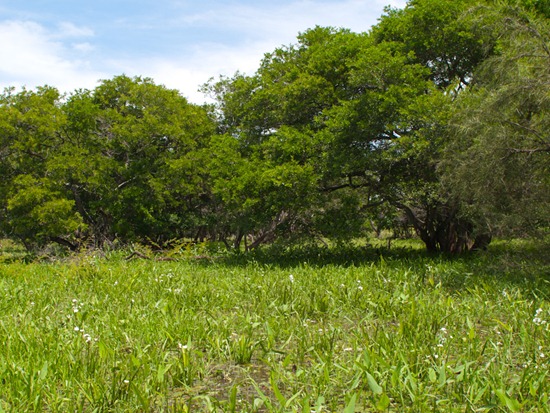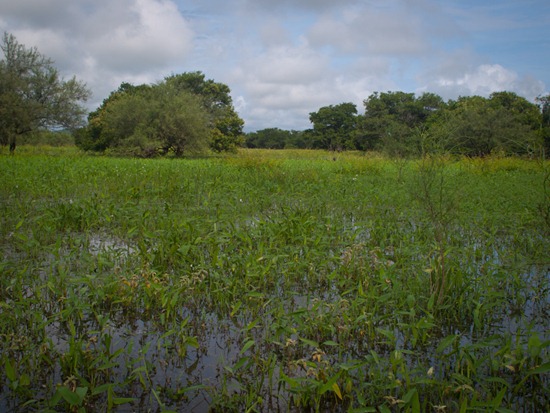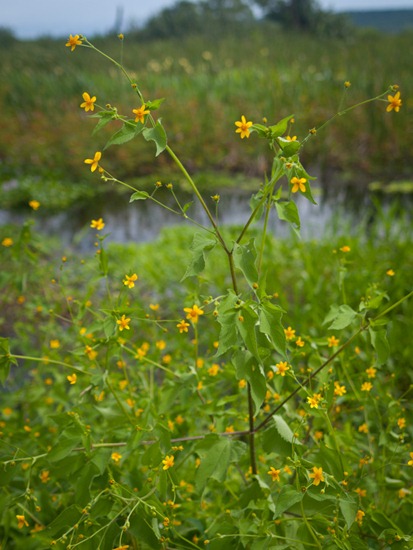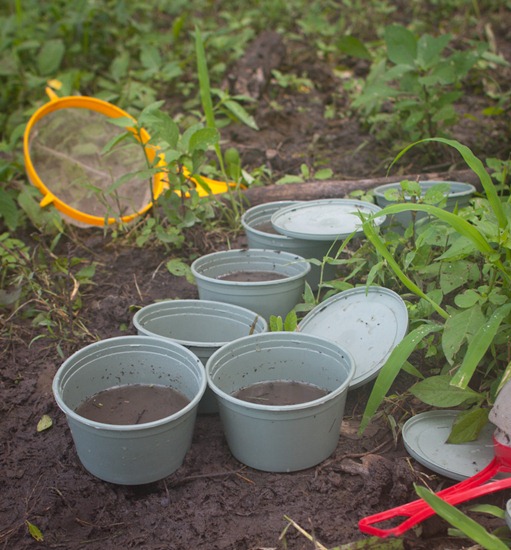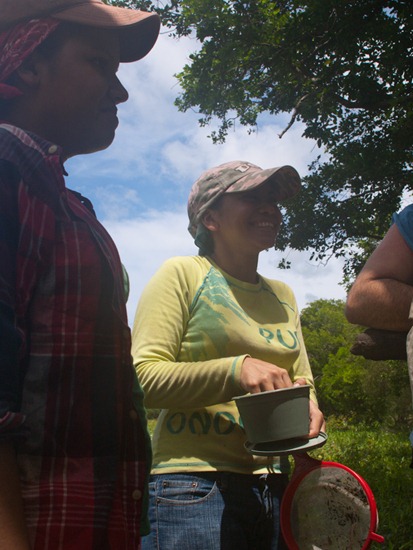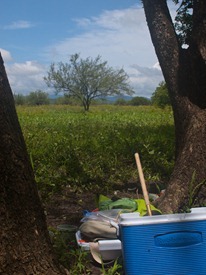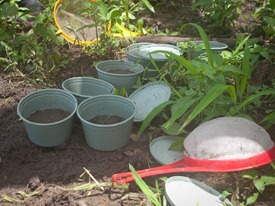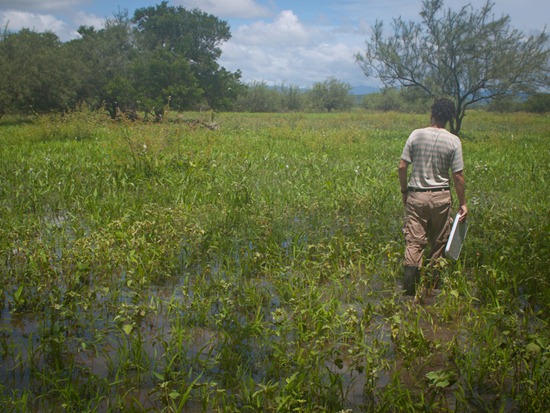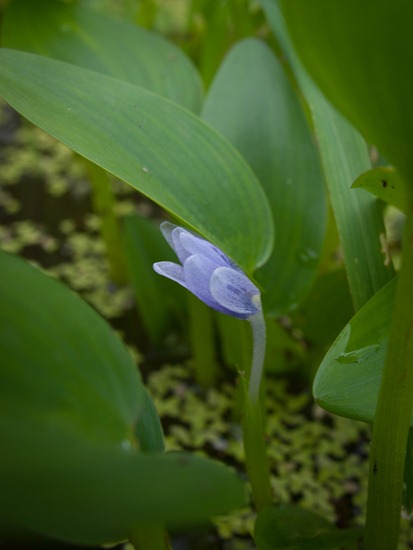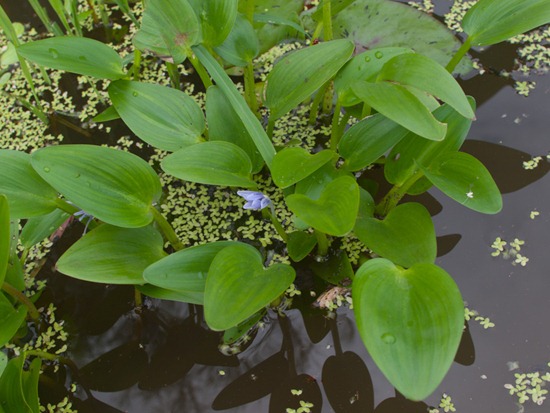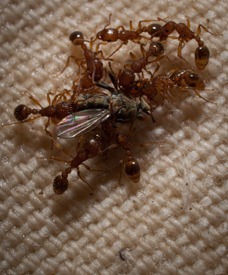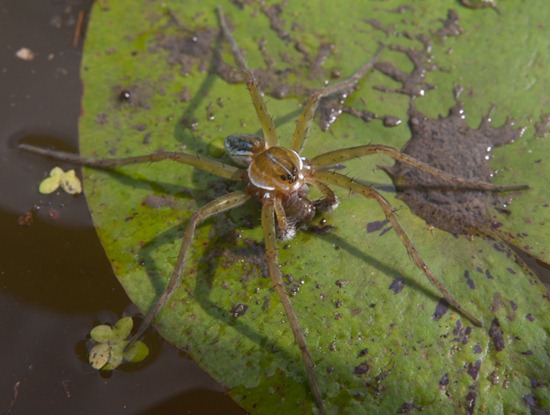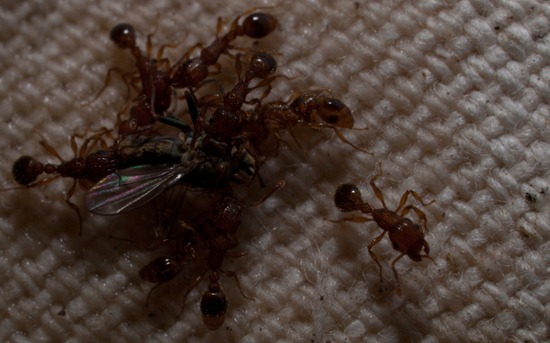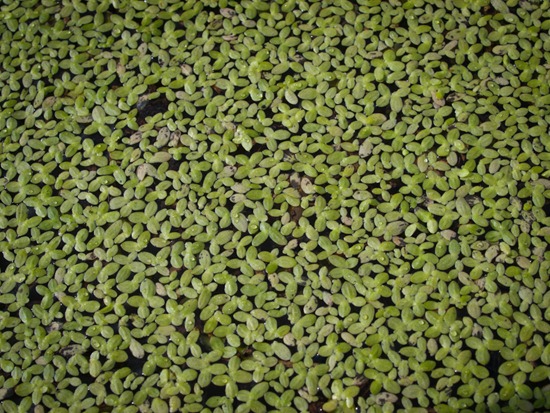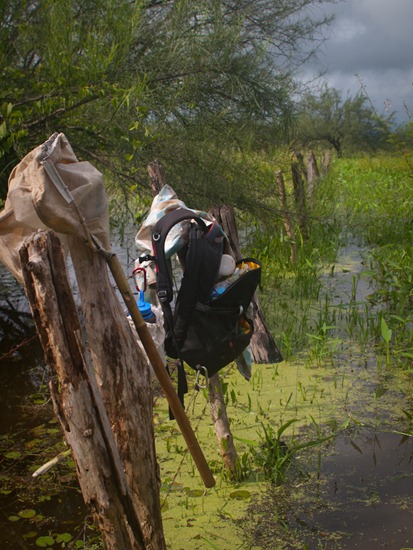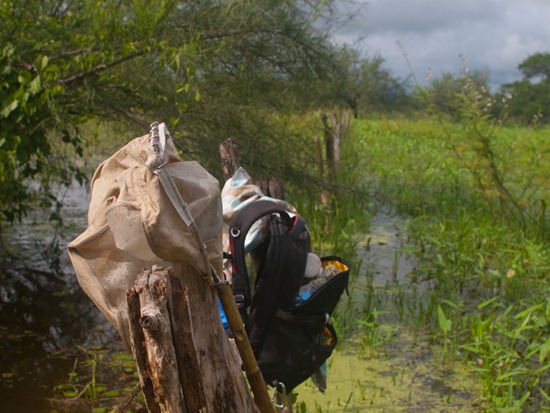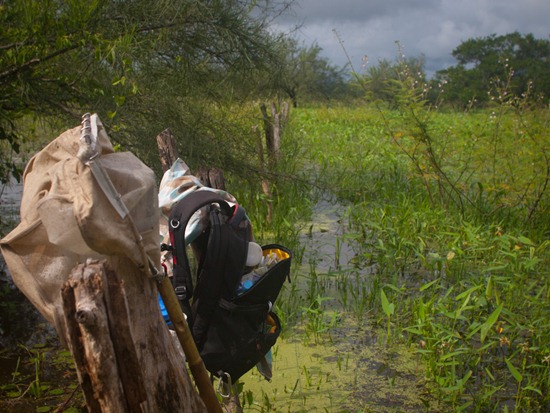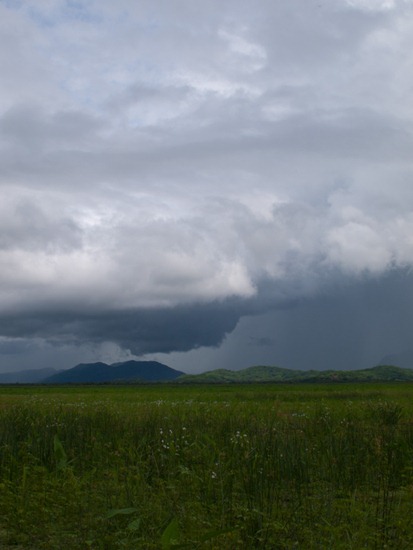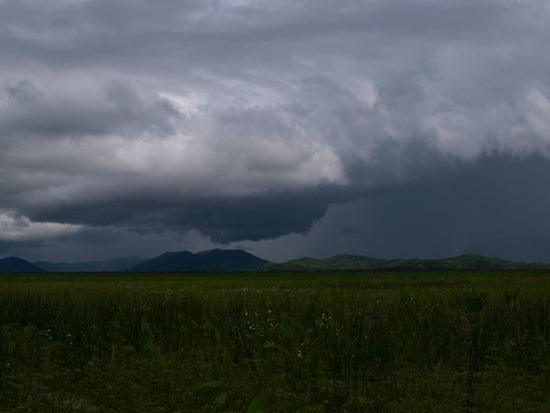Croton argenteus confused me for a while. I had encountered the species in and around the Palo Verde wetland as a small, emergent plant, and had assumed it was annual or at least without above ground tissue across years because it was not present in the beginning of the season and it was flowering soon after emerging. As such, I could not find it in the keys….
Then, while driving to Reserva Biologica Lomas de Barbudal to help Ramsa (a PhD student studying watershed land-use effects on insect communities in and around dry-forest streams), I spotted a large shrub that looked surprisingly similar to my yet unidentified wetland plant. When I returned and picked up the shrub and tree book – bingo.
I suspect that cattle grazing knocks back this species from growing to a shrub-like state, since there is frequently evidence of herbivory on the small plants I encountered.

